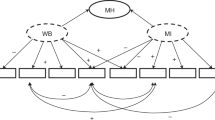Abstract
Objective
Couplet care is an innovative approach to provide postpartum care in the neonatal intensive care unit (NICU) with little known about its impact on infant feeding outcomes and maternal stress.
Study design
We compared breastfeeding outcomes and maternal NICU-related stress among mother-infant dyads based on exposure to couplet care in a prospective cohort study.
Result
Among 19 couplet-care exposed (CCE) dyads and 19 traditional postpartum care dyads, CCE mothers had lower self-reported stress related to parent-infant relationship as compared to traditional care (P < 0.001). CCE infants received relatively more feeds at the breast (P < 0.001), more breastmilk feeds (P = 0.002), and fewer feeds by staff (P < 0.001). Adjusted for gestational age, marital status, and infant length of stay, couplet care was associated with being in a higher tertile of percent breastmilk feeds (aOR 7.29, 95% CI 1.45–36.65).
Conclusion
NICU couplet care was associated with improved parental stress and breastfeeding outcomes during hospitalization.
This is a preview of subscription content, access via your institution
Access options
Subscribe to this journal
Receive 12 print issues and online access
$259.00 per year
only $21.58 per issue
Buy this article
- Purchase on Springer Link
- Instant access to full article PDF
Prices may be subject to local taxes which are calculated during checkout
Similar content being viewed by others
References
Dieterich CM, Felice JP, O’Sullivan E, Rasmussen KM. Breastfeeding and health outcomes for the mother-infant dyad. Pediatr Clin North Am. 2013;60:31–48.
World Health Organization. Guideline: Protecting, promoting and supporting breastfeeding in facilities providing maternity and newborn services. Geneva (Switzerland): World Health Organization; 2017. https://www.who.int/publications/i/item/9789241550086.
Maastrup R, Hannula L, Hansen MN, Ezeonodo A, Haiek LN. The Baby-friendly Hospital Initiative for neonatal wards. A mini review. Acta Paediatr. 2022;111:750–5.
White RD. The next big ideas in NICU design. J Perinatol. 2016;36:259–62.
Machry H, Joseph A, White R, Allison D. Designing for family engagement in neonatal ICUs: How is the interior design of single-family rooms supporting family behaviors, from passive to active? HERD. 2023;16:238–60.
Feeley N, Robins S, Genest C, Stremler R, Zelkowitz P, Charbonneau L. A comparative study of mothers of infants hospitalized in an open ward neonatal intensive care unit and a combined pod and single-family room design. BMC Pediatr. 2020;20:38.
Tandberg BS, Frøslie KF, Flacking R, Grundt H, Lehtonen L, Moen AP. Parent-infant closeness, parents’ participation, and nursing support in single-family room and open bay NICUs. J Perinat Neonatal Nurs. 2018;32:E22.
Domanico R, Davis DK, Coleman F, Davis BO. Documenting the NICU design dilemma: Comparative patient progress in open-ward and single family room units. J Perinatol. 2011;31:281–8.
van Veenendaal NR, van Kempen AAMW, Franck LS, O’Brien K, Limpens J, van der Lee JH, et al. Hospitalising preterm infants in single family rooms versus open bay units: A systematic review and meta-analysis of impact on parents. EClinicalMedicine. 2020;23:100388.
van Veenendaal NR, van Kempen AAMW, Broekman BFP, de Groof F, van Laerhoven H, van den Heuvel MEN, et al. Association of a zero-separation neonatal care model with stress in mothers of preterm infants. JAMA Netw Open. 2022;5:e224514.
Flacking R, Thomson G, Ekenberg L, Löwegren L, Wallin L. Influence of NICU co-care facilities and skin-to-skin contact on maternal stress in mothers of preterm infants. Sex Reprod Health. 2013;4:107–12.
Joshi NS, Gupta A, Allan JM, Cohen RS, Aby JL, Kim JL, et al. Management of chorioamnionitis-exposed infants in the newborn nursery using a clinical examination-based approach. Hosp Pediatr. 2019;9:227–33.
Redmond B, Gambardella T, Bruno CJ. Reimagination through renovation: Incorporating couplet care in a level 4 academic NICU. J Perinatol. 2023;43:26–9.
Miles MS, Funk SG, Carlson J. Parental Stressor Scale: Neonatal Intensive Care Unit. Nurs Res. 1993;42:148–52.
Rubin M. When to adjust alpha during multiple testing: a consideration of disjunction, conjunction, and individual testing. Synthese. 2021;199:10969–1000.
Glass GV. Note on rank biserial correlation. Educ Psychol Meas. 1966;26:623–31.
Vargha A, Delaney HD. A critique and improvement of the CL common language effect size statistics of McGraw and Wong. J Educ Behav Stat. 2000;25:101–32.
Gignac GE, Szodorai ET. Effect size guidelines for individual differences researchers. Pers Indiv Dif. 2016;102:74–8.
Nahm FS. Receiver operating characteristic curve: overview and practical use for clinicians. Korean J Anesthesiol. 2022;75:25–36.
Kubicka Z, Fiascone J, Williams D, Zahr E, Ditzel A, Perry D, et al. Implementing modified family integrated care in a U.S. neonatal intensive care unit: nursing perspectives and effects on parents. J Perinatol. 2023;43:503–9.
Acknowledgements
The authors thank Henna Shaikh for her assistance with background research.
Funding
This study was supported by Yale School of Medicine internal funding.
Author information
Authors and Affiliations
Contributions
KND drafted the initial manuscript, assisted with and approved the study’s methodology, and carried out analyses. CN assisted with study design and subject enrollment, collected data, and contributed to data interpretation and drafting the initial manuscript. CH collected data and provided assistance with project management. VS assisted with and approved the study’s methodology, reviewed data analyses, and interpreted results. SNT conceptualized and supervised all aspects of the study. CN, VS, and SNT critically reviewed and revised the manuscript. All authors approved the final manuscript.
Corresponding author
Ethics declarations
Competing interests
The authors declare no competing interests.
Ethics approval and consent to participate
This study was reviewed and approved by the Yale University Institutional Review Board and was conducted in accordance with the Declaration of Helsinki. Informed consent was obtained from all participants.
Additional information
Publisher’s note Springer Nature remains neutral with regard to jurisdictional claims in published maps and institutional affiliations.
Rights and permissions
Springer Nature or its licensor (e.g. a society or other partner) holds exclusive rights to this article under a publishing agreement with the author(s) or other rightsholder(s); author self-archiving of the accepted manuscript version of this article is solely governed by the terms of such publishing agreement and applicable law.
About this article
Cite this article
Doughty, K.N., Nichols, C., Henry, C. et al. Maternal stress and breastfeeding outcomes in the NICU couplet care experience: a prospective cohort study. J Perinatol (2024). https://doi.org/10.1038/s41372-024-02000-7
Received:
Revised:
Accepted:
Published:
DOI: https://doi.org/10.1038/s41372-024-02000-7



